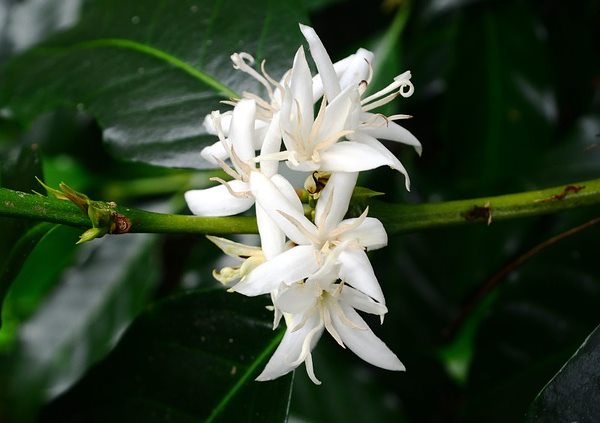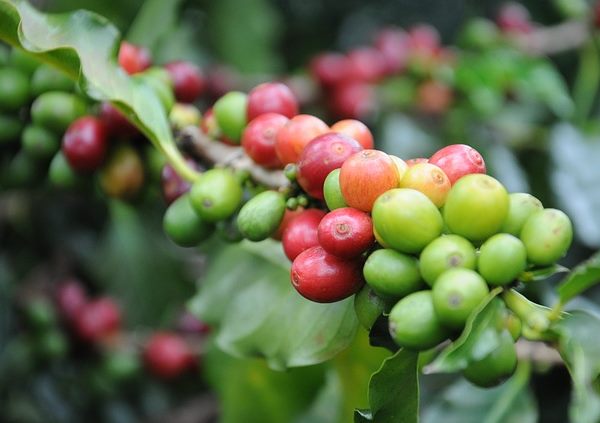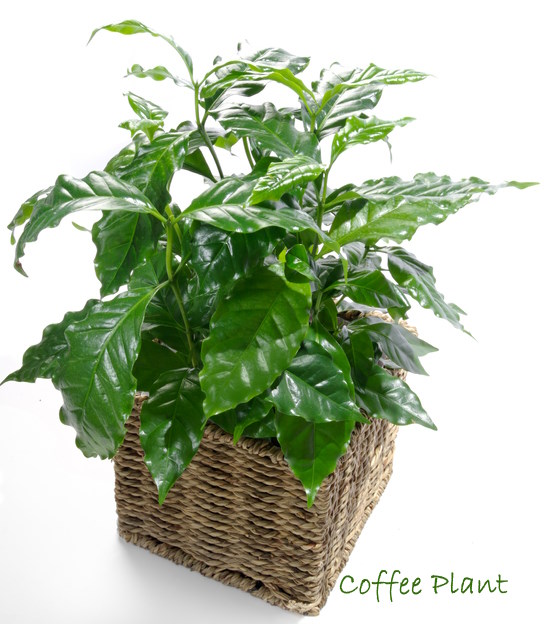Growing Coffee Plant Indoors
Coffee plant is the source of the world's most popular breakfast beverage. Not many know, however, that it makes a beautiful and easy-to-grow house plant.
Growing coffee plants indoors is easy. They are vigorous growers and are long-lived. They make attractive house plants, just don't expect them to offer that morning cup of joe. It could take a few years before you see many fruits on it.
Indoors, consider Coffea arabica purely decorative. In this guide, you'll get tips for growing coffee plants indoors, including when to water, repot, prune, and more.

Get to Know Coffee Plant as a Houseplant
This member of the Rubiaceae family is one of 90 in the Coffea genus. Its origins are in Southern Asia and Tropical Africa.
Coffea arabica is believed to be the first species of coffee to be cultivated, being grown in southwest Arabia for well over 1,000 years.
It is an evergreen shrub that has glossy, dark-green leaves with ruffled edges on willowy stems. The leaves can grow up to 6 in/15 cm long and about 2 in/5 cm wide on mature plants. Indoor coffee plants are slow growing, but make attractive houseplants, even when young.
How big does it get? Coffee arabica can reach 15 ft or more in its native tropical habitat, but stays much smaller confined to a pot. Your coffee plant will reach up to 6 ft (1.8 m) indoors. You can cut it back in spring to control its size. Pruning harshly won't hurt it at all.
Want a compact coffee houseplant? Look for the cultivar Coffea arabica 'Nana' that only grows to about 1 ft/30 cm tall.
Does it flower indoors? Yes. After 3 or 4 years, Coffea arabica produces star-shaped, sweetly scented white flowers in the spring. If your coffee plant doesn't flower, it may not be getting enough light. Also, take care to keep your plant warm. (See "Coffee Plant Care Tips" below.)
These flowers are followed by 1/2-inch green fruits which change to red then to almost black as they ripen, a process that takes several months. Inside each ripened fruit are 2 seeds (or beans) that when properly roasted can be ground and made into coffee. You'll only get a few spoonsful of ground coffee for your efforts, but it is possible.

Special Helps for Your Indoor Coffee Plant
Prune coffee plant back in spring to keep it bushy and full. Pruning also gives it an attractive shape. Use clean pruning shears to cut the stem at a 45° angle, 1/4-inch above a leaf axil (the place where a leaf attaches to the stem). Prune off top growth to keep this coffee bean plant small.
Repot in spring, moving to a pot 1-2 inches (2.5-5 cm) larger. Use a pot with a drainage hole to avoid soggy soil. Want to use a decorative pot without a drainage hole? Use it as a cachepot. Just slip the plain nursery pot inside the cachepot. I use small rocks in the bottom of cachepots to keep the inner pot above the drainage water.
Leaf drop and brown leaf tips are a symptom of dry air. It's easy to raise the humidity for houseplants with a cool-mist room humidifier.
Something bugging your houseplant? Fine webbing between leaves and stems are often the first tell-tale sign of spider mites. These destructive pests are attracted to houseplants when indoor air is dry, typically during the winter months. Isolate any infested houseplant and treat it right away.
Wondering where to buy a coffee plant? You'll find it at some online nurseries. Look for the cultivar Coffea arabica 'Nana' if you want a more compact plant.
 Glossy foliage makes coffee plants worth growing indoors. Photo ©vspn24
Glossy foliage makes coffee plants worth growing indoors. Photo ©vspn24Coffee Plant Care Tips
Light: Keep in bright light, shaded from direct sun.
Water: Keep soil thoroughly moist but not soggy in spring and summer, barely moist in fall and winter. Always use tepid water for watering your houseplants because cold water is a shock to them.
Humidity: Requires moist air (around 50% relative humidity or higher). Indoor air can become extremely dry indoors, especially during the winter months. Brown leaf tips are a symptom of dry air. To raise the humidity, use a cool-mist room humidifier for best results.
Temperature: Average room (65-75°F/18-24°C). Coffea arabica can withstand cooler temperatures in fall and winter, when growth slows down, but it's not tolerant of freezing temperatures.
Soil: Peat moss based potting mix with horticultural sand added to provide good drainage.
Fertilizer: Feed every 2 weeks spring and summer with a balanced water-soluble fertilizer at half the recommended amount on the label. It's a good idea to fertilize houseplants after watering to prevent burning the roots.
Propagation: Save your fresh, unroasted coffee beans and sow them in spring. They're easy to germinate, growing into a young plant within a year. You can take coffee plant cuttings, however cuttings are difficult to root; you'll have the best chance at success by taking young stems before they have hardened.


